Quick game: Imagine the fruit starting with the letter K. What have you imagined?
Let me guess. Is it kiwi?
If that’s the only K-fruit that you know about, then you’ve landed in the right place! Actually, there are numerous reasons why you’re here reading about fruits that start with K.
My first assumption is that you’re planning to win that guessing game and you’re also interested in learning more about these fruits.
After all, the best way to learn something is through playing games. That being said, I’ve prepared the juiciest and most exotic list of fruits that start with K followed by plenty of fun facts!
1. Kiwi fruit

We all know what kiwi is and what it looks like, so I won’t bother you with that unnecessary information. I’ll rather focus on some other interesting facts that you might not know:
The lifespan of a kiwi can be up to 60 years.
The wine of a kiwi plant can grow up to 30 feet long in a season.
Kiwis contain high amounts of vitamin C and dietary fiber.
Refrigeration is not the best way to store kiwi, but rather at room temperature.
2. Kiwano fruit
Kiwano fruit is native to Africa. This citrus fruit is also known as horned melon, African horned cucumber, African horned squash, or jelly melon.
The kiwano fruit has a sweet and tangy flavor that can be compared to the taste of honeydew melon. It is high in vitamin C, magnesium, and potassium.
3. Kumquat fruit
Kumquat is a small fruit that looks like an orange on the outside. Kumquats are native to Southeast China, but they are also grown in California and Florida in the United States. They are sweet with a sour after-taste which makes them great for marmalades or jams.
4. Kapok fruit
The Kapok tree is a tropical tree that grows in the rainforest. Its scientific name is Ceiba pentandra. The kapok fruit looks like a large, green, oval-shaped pod with spikes on it.
It tastes like a mix of an apple and a banana. It has been used for centuries by indigenous people in Central America and the Amazon to make clothing, rope, and other items because of its strong fibers. Its fibers are sometimes referred to as silk-cotton.
DID YOU KNOW? The Kapok tree can grow up to 250 feet tall and has a lifespan of about 200 years.
5. Korean pear
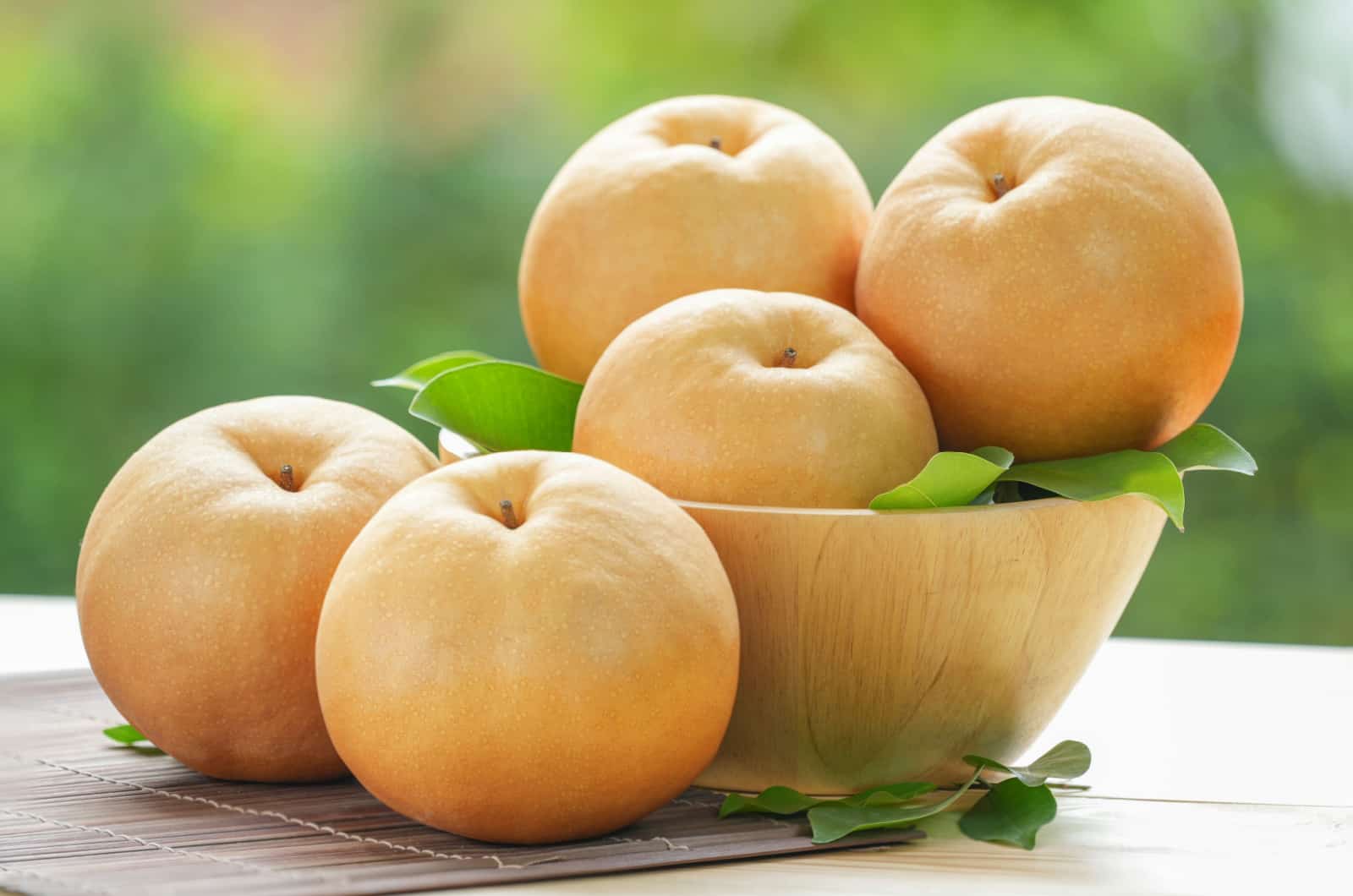
As the name implies, the Korean pear is a fruit native to Korea, and it’s also known as the Asian pear. The pear is round and bigger than regular pears.
It has a crunchy texture and sweet flavor. The Korean pear is an excellent source of dietary fiber, potassium, and vitamin C.
6. Kaywa fruit
The Kaywa fruit is native to Peru. It is yellowish-orange in color and the flavor is similar to cucumber. If you cook kaywa fruit, you’ll notice that it tastes like asparagus.
The Kaywa fruit belongs to the Cucurbitaceae family, and it is also known as the slipper gourd.
7. Kaffir lime fruit
The kaffir lime fruit, also called the makrut lime, is native to Southeast Asia. It has a distinct spicy lime aroma and woody notes.
It has been used in traditional medicine and dishes for centuries. Kaffir lime fruit can be used to make smoothies, desserts, salads, as well as various cocktail recipes.
The kaffir lime tree can grow up to 35 feet tall and produces small oval-shaped fruits with tough skin. The inside of the fruit has a yellowish flesh with a tart flavor that is often used in Thai cooking.
DID YOU KNOW? Kaffir lime fruit is not a true lime because it doesn’t have an acidic taste.
8. Kepel fruit
Kepel fruit is a type of fruit that is grown in many different countries from India to Bangladesh, and has many uses. It is also known as kepil, kepeli, or kelpi.
Kepel fruit is small, round, and has a yellowish-green color on the outside. On the inside, they have small seeds that are surrounded by a white fleshy layer. The taste of the kepel fruit is sweet with a sour aftertaste.
See also: 30 Fruits That Start With O (From Orange To Okra!)
9. Kei apple fruit
Kei apple fruit is native to Southern Africa. It has a round shape, and it is usually green or yellow in color. The Kei apple fruit can be eaten as it is, or it can be used for desserts.
This apple contains high amounts of iron, vitamin C, calcium, potassium, and magnesium which are all important for proper immune system function.
10. Kawakawa fruit
The kawakawa fruit is grown in New Zealand. It’s small, round, and green in color. The taste of this fruit is sour, tangy, and citrusy.
It can be eaten raw or cooked. It’s often used in sauces or desserts. One such dessert is the kawakawa tart, which contains kawakawa fruit in a pastry crust with a cream filling.
11. Knobby Russet apple
Knobby Russet apples are a variety of apples that have an elongated shape. They are also known as the “long apple.” They have a distinct, coarse texture and are often used in cooking. The Knobby Russet apple was first discovered in Susex, England, in 1819.
DID YOU KNOW? The name of Knobby Russet apple is derived from the word “russet,” which means to turn brown or grayish-brown in color.
12. Keitt mango
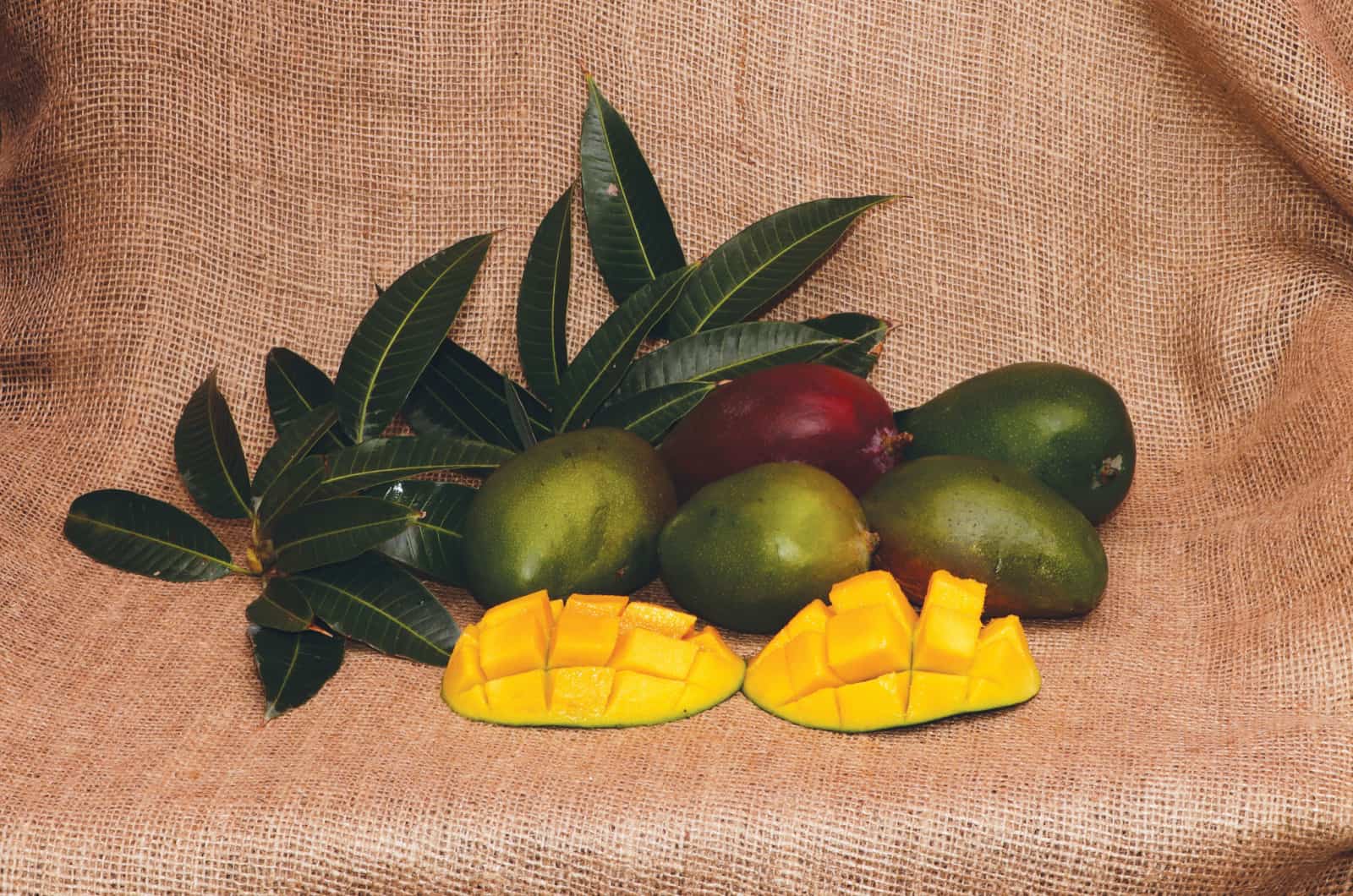
Keitt mango originated in Florida. The fruit has a low-acid, exceptionally sweet flavor. It has a smooth texture and the color of its flesh ranges from yellow to orange-yellow.
In addition to being delicious, the Keitt mango has many health benefits. It contains plenty of vitamins and minerals such as vitamin C, phosphorus, magnesium, selenium, vitamin A, etc.
13. Kowai fruit
The kowai fruit grows primarily in tropical climates. This fruit is known for its unique taste and healing properties.
Kowai fruit can be used to make various dishes, such as jams or pies. They also have medicinal properties and can be used to heal many different types of ailments.
14. Kabosu fruit
Kabosu is a fruit that is Japanese citrus fruit that has a sour-sweet taste. Actually, Kabosu is a rare citrus variety that belongs to the Rutaceae family.
The Kabosu fruit is also known as the Japanese grapefruit. It has a very thin skin, and it can be eaten with the skin on.
15. Kakadu plum
Kakadu plum is a fruit native to Australia. The fruit is also known as Australian wild plum, desert plum, and bush plums.
It has a sour taste and is often used in jams, jellies, and sauces. It is a cross between a raisin, jackfruit, and apricot in terms of taste.
DID YOU KNOW? The kakadu plum tree can grow up to 10 meters high, and it bears fruit approximately six months after the flowers have bloomed.
16. Kahikatea fruit
The kahikatea tree is native to New Zealand. The kahikatea tree can grow up to 40-60 meters tall, but the majority of the trees are much smaller than that.
The kahikatea fruit is not just a type of fruit – it’s actually a type of berry that grows on the branches of the kahikatea tree.
See also: 32 Fruits That Start With G (From Grapple To Grape!)
17. Key lime
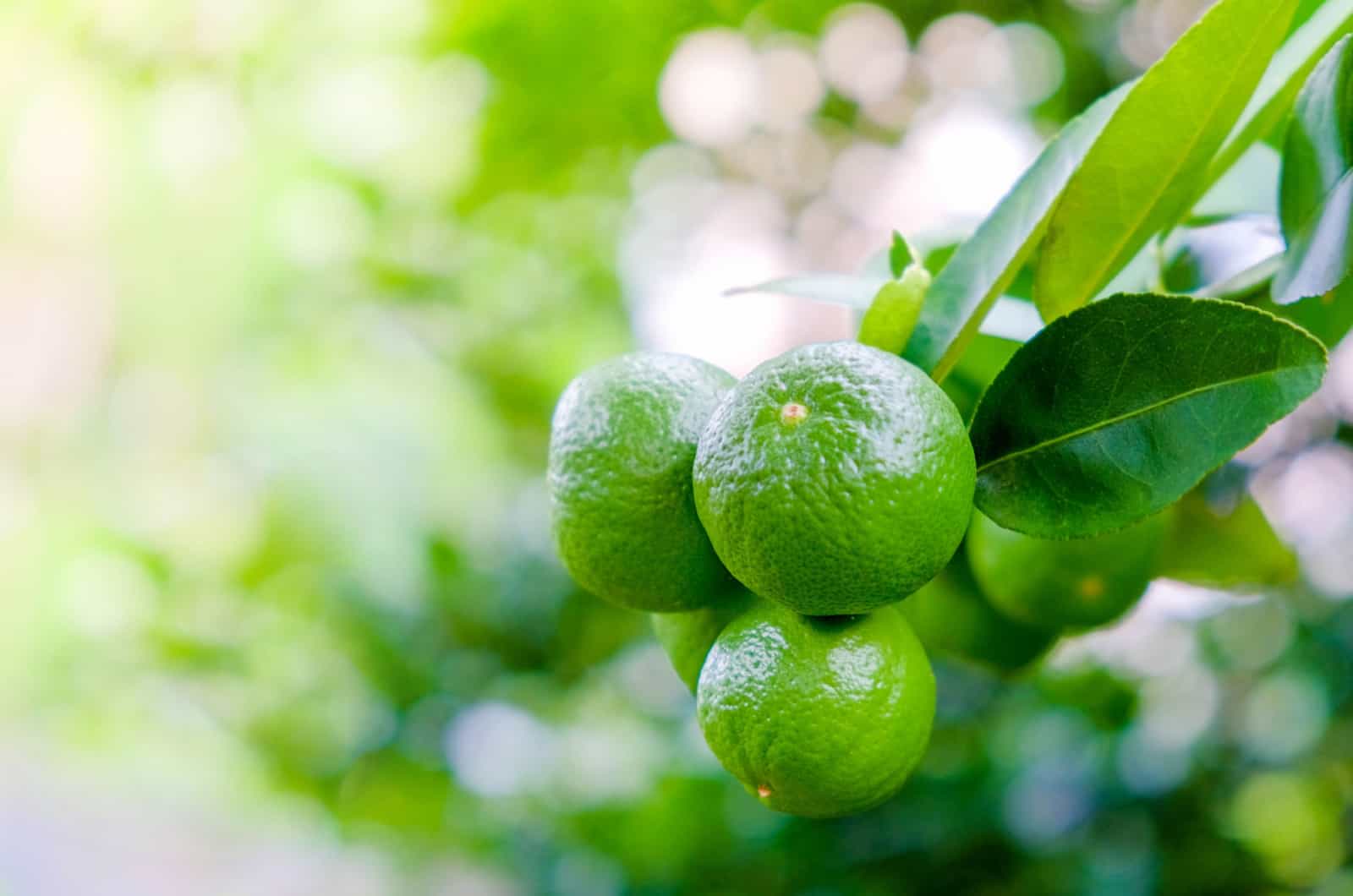
Key lime is a variety of lime that is smaller and has more seeds than other varieties. It grows in tropical climates and has thin, green skin. The flesh of the fruit has a strong, acidic flavor.
Key lime is also known as Bartender’s lime, West Indian lime, Omani lime, or Mexican lime.
18. Karonda fruit
Karonda fruit is a type of fruit that is found in the Indian subcontinent and parts of Southeast Asia. It typically grows in places with high temperatures.
The fruit has a round shape and a hard shell. The inside of the fruit has a yellowish-orange color and it has small black seeds.
19. Korlan fruit
Korlan is found in southeast Asia. It has a sour flavor with a sweet aftertaste, and it can be eaten raw or used in cooking. The Korlan fruit is known for its many health benefits. It has high amounts of vitamin C.
DID YOU KNOW? Korean herbalists have used the wild roots of Korlan to help in digestion, calm a person’s spirit, strengthen the lungs, and give extra energy to the patient.
20. Keule fruit
Keule fruit has a round shape and yellow skin. The flesh is soft and sweet. The Keule tree is native to Chile, but it can be grown elsewhere too.
Keule fruit is also known as queule, hualhual, and gomortega keule. It can grow up to 17 meters tall, which makes it one of the tallest trees around.
21. Kundang fruit
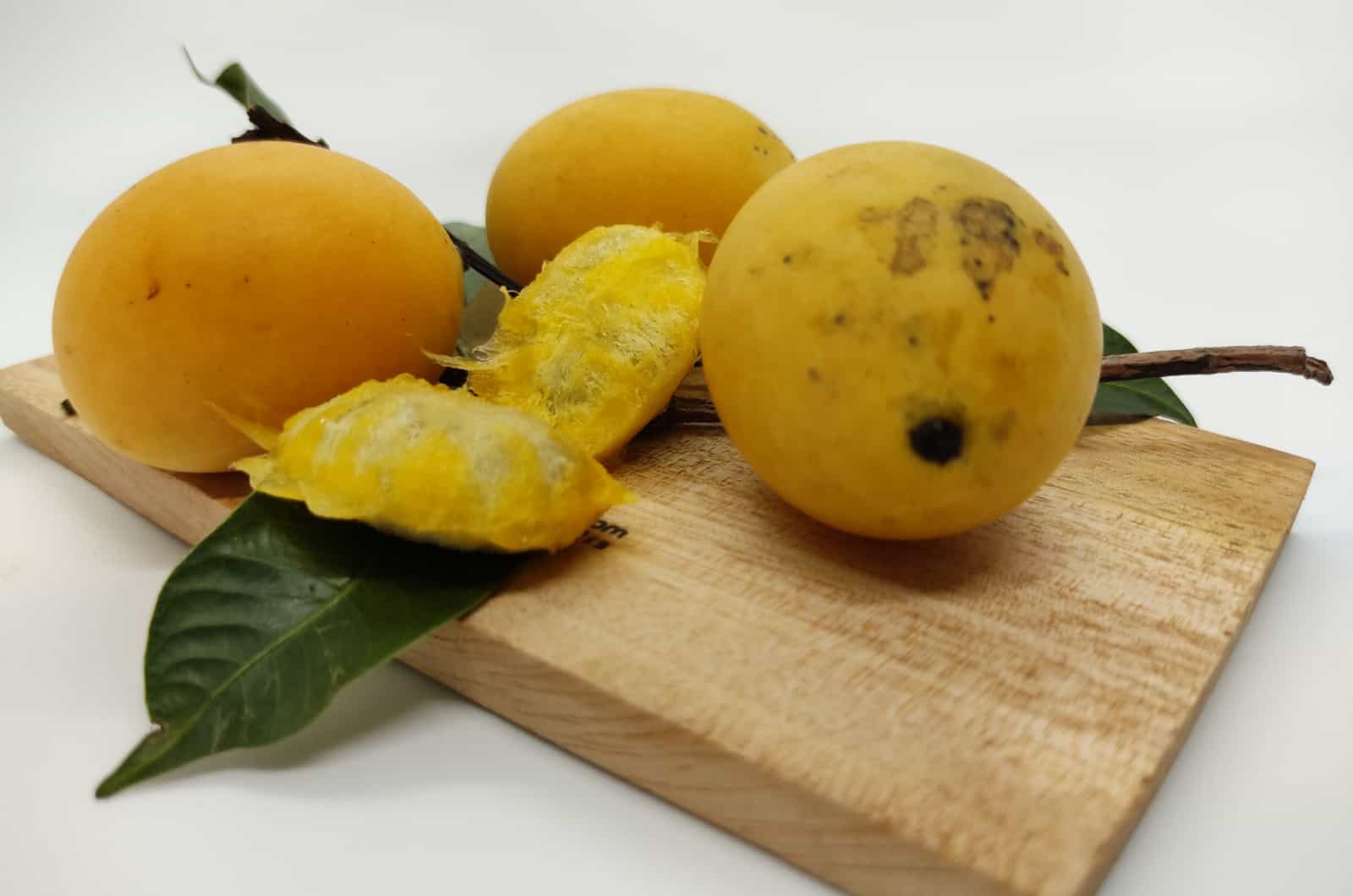
Kundang fruit is native to Indochina and Southeast Asia. Kundang fruit is also known as mariam plum, gandaria, plum mango, and mango plum.
The fruit itself is round in shape with an orange peel. When peeled, the fruit reveals white fleshy pulp.
22. Kwai muk fruit
Kwai muk is known as Strawberry Apricot Pineapple. The fruit is often eaten raw but can also be cooked, dried, or made into jam.
The kwai muk fruit has light brown skin and sweet juicy pulp. It can grow to be about the size of an apple.
DID YOU KNOW? Kwai muk fruit is considered one of the ugliest fruits with an amazing flavor.
23. Kutjera fruit
The Kutjera fruit is an Australian desert raisin. It has a caramel and raisin-like flavor with a spicy aftertaste. One of the easiest ways to use it in cooking is by grinding it.
Kutjera is commonly used to make jellies and jams. It’s also used in wine, liqueurs, teas, and other drinks. What you probably didn’t know is that Kutjera can also be used as a natural dye for fabric and other materials.
24. Kyoho grapes
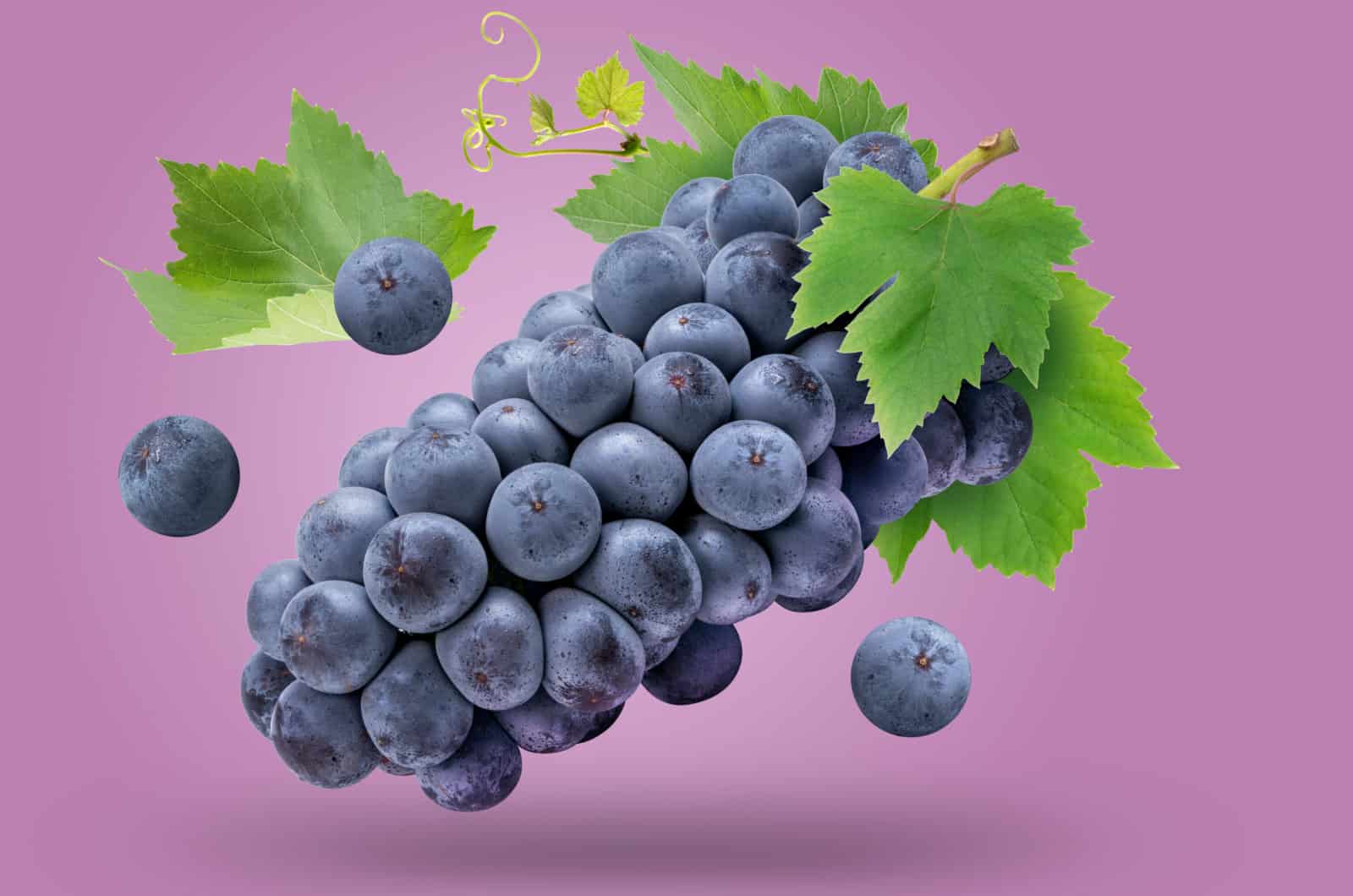
Kyoho grapes were created in Japan. They are incredibly sweet and juicer than other varieties of grapes. The color of these grapes is dark (almost black).
Kyoho grapes have a high sugar content which may not be suitable for those who have diabetes or who are on a low-sugar diet.
25. Kokoneos
I’m sure you already know what kokoneos is. Kokoneos is the Korean word meaning ‘coconuts’.
It is a Greek coconut with sweet, juicy flesh and plenty of water. This type of coconut is perfect for Mediterranean cuisine.
I think that’s enough fruits that start with K. Good luck with your guessing game! 😎


